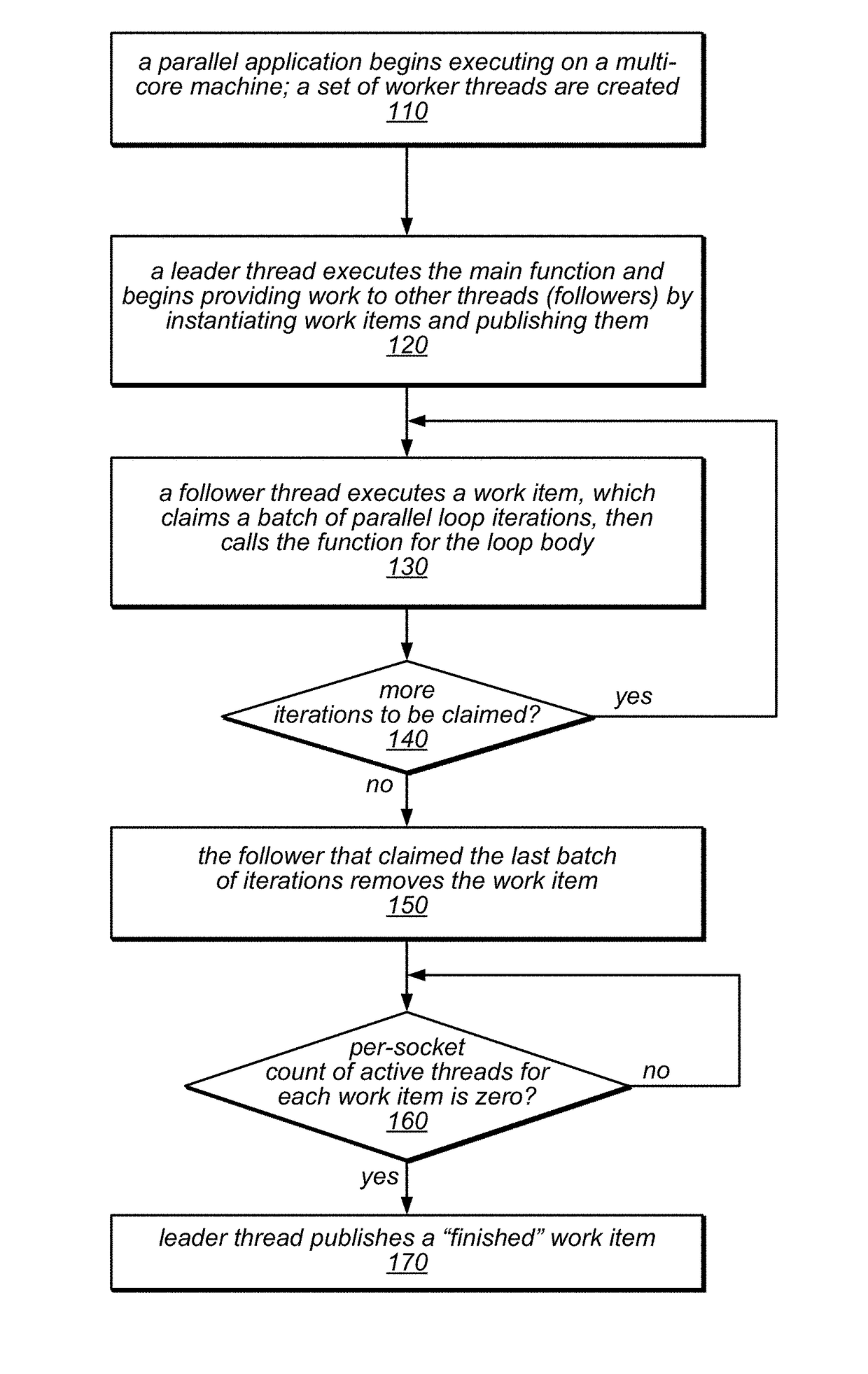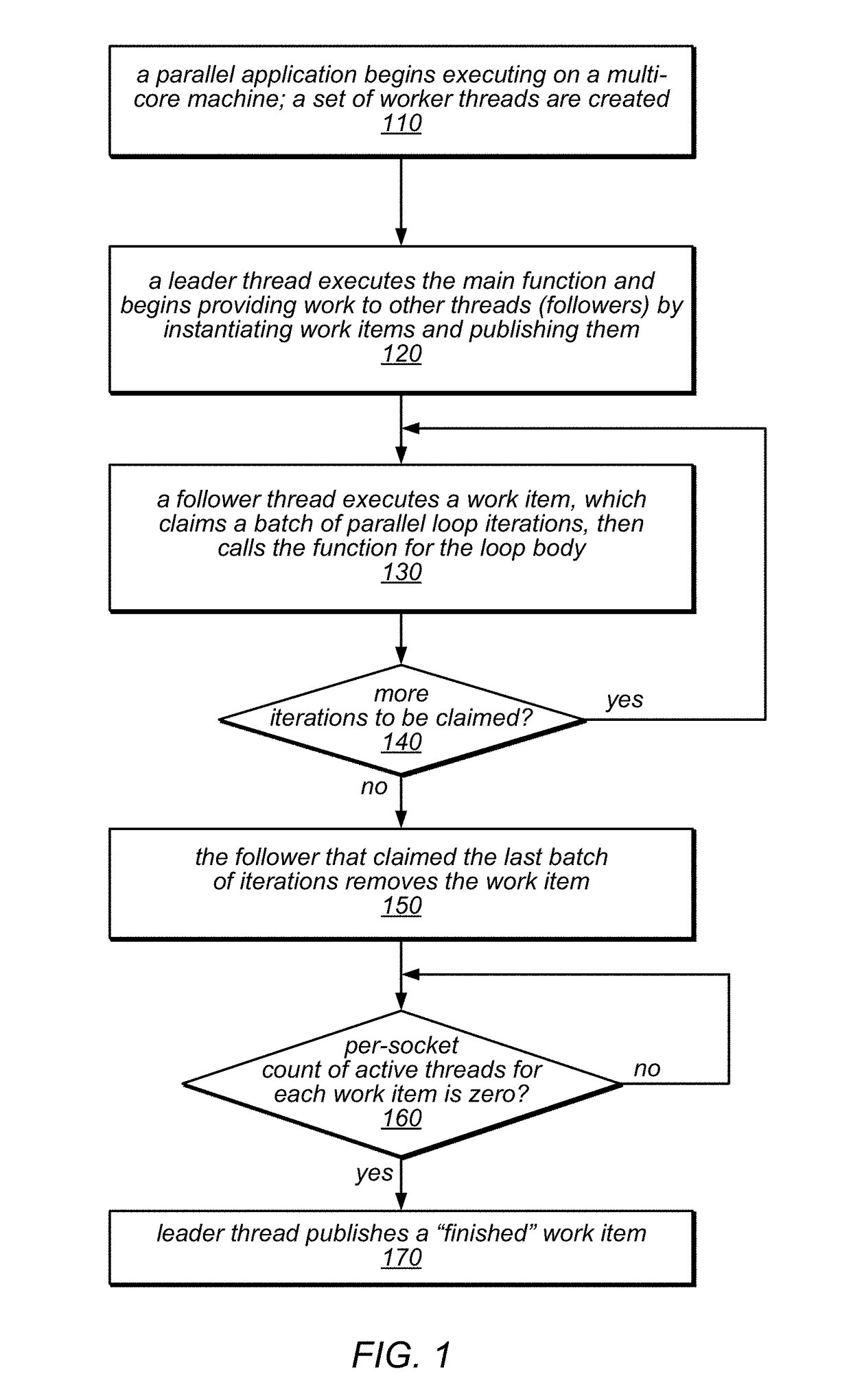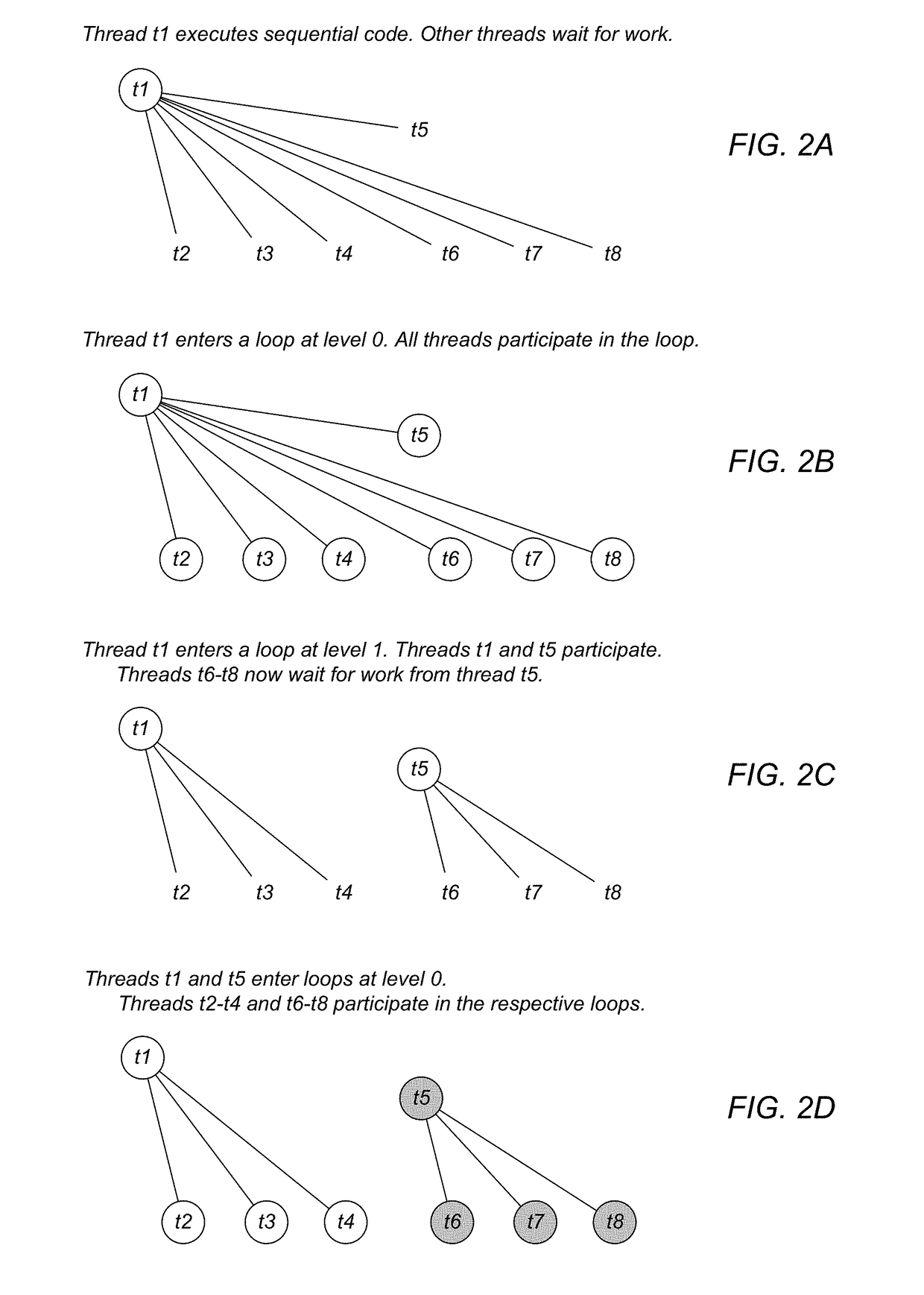Fine-grained scheduling of work in runtime systems
a runtime system and work technology, applied in the field of parallel computing, can solve the problems of cpu demands, current operating systems and runtime systems that do not perform well for these types of workloads, and it is difficult (if not impossible) to tune applications for each one, so as to reduce load imbalance and improve performance.
- Summary
- Abstract
- Description
- Claims
- Application Information
AI Technical Summary
Benefits of technology
Problems solved by technology
Method used
Image
Examples
Embodiment Construction
Introduction
[0033]Software is increasingly written to run on multi-processor machines. Trends in this area include the need to make effective use of multi-core hardware (leading to increasing use of parallelism within software), the desire to use hardware efficiently (leading to greater co-location of workloads on the same machine), and the expectation that parallel applications should “just work” without needing to perform careful tuning that is directed to any specific hardware. A runtime system for distributing loop iterations between multiple threads in a shared-memory machine is described that may implement fine-grained distribution of the loop iterations, which may reduce load imbalance and thereby improve performance. In some embodiments, the mechanisms and techniques described herein for implementing fine-grained distribution of parallel loops (which may be collectively referred to herein as “the runtime system” or “RTS”) may be integrated with a framework that includes a re...
PUM
 Login to View More
Login to View More Abstract
Description
Claims
Application Information
 Login to View More
Login to View More - R&D
- Intellectual Property
- Life Sciences
- Materials
- Tech Scout
- Unparalleled Data Quality
- Higher Quality Content
- 60% Fewer Hallucinations
Browse by: Latest US Patents, China's latest patents, Technical Efficacy Thesaurus, Application Domain, Technology Topic, Popular Technical Reports.
© 2025 PatSnap. All rights reserved.Legal|Privacy policy|Modern Slavery Act Transparency Statement|Sitemap|About US| Contact US: help@patsnap.com



